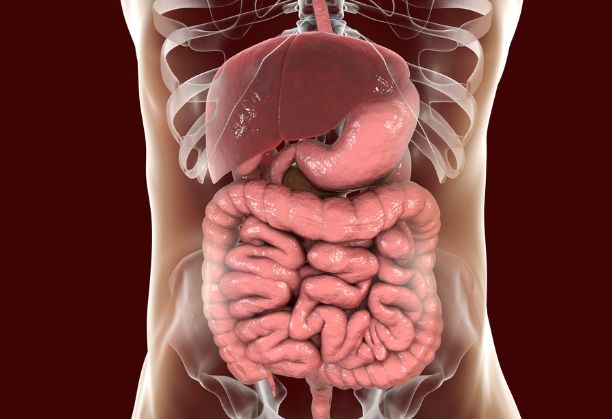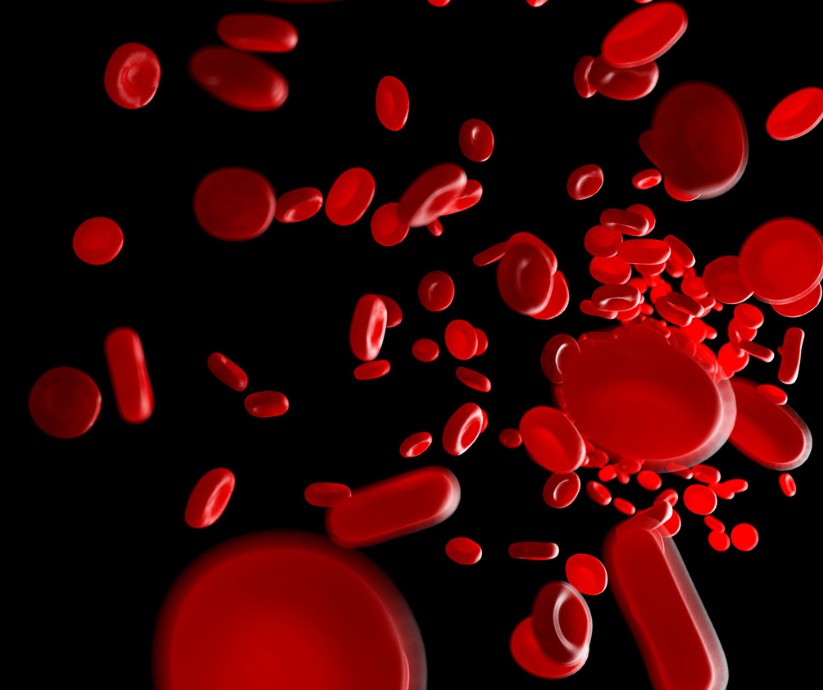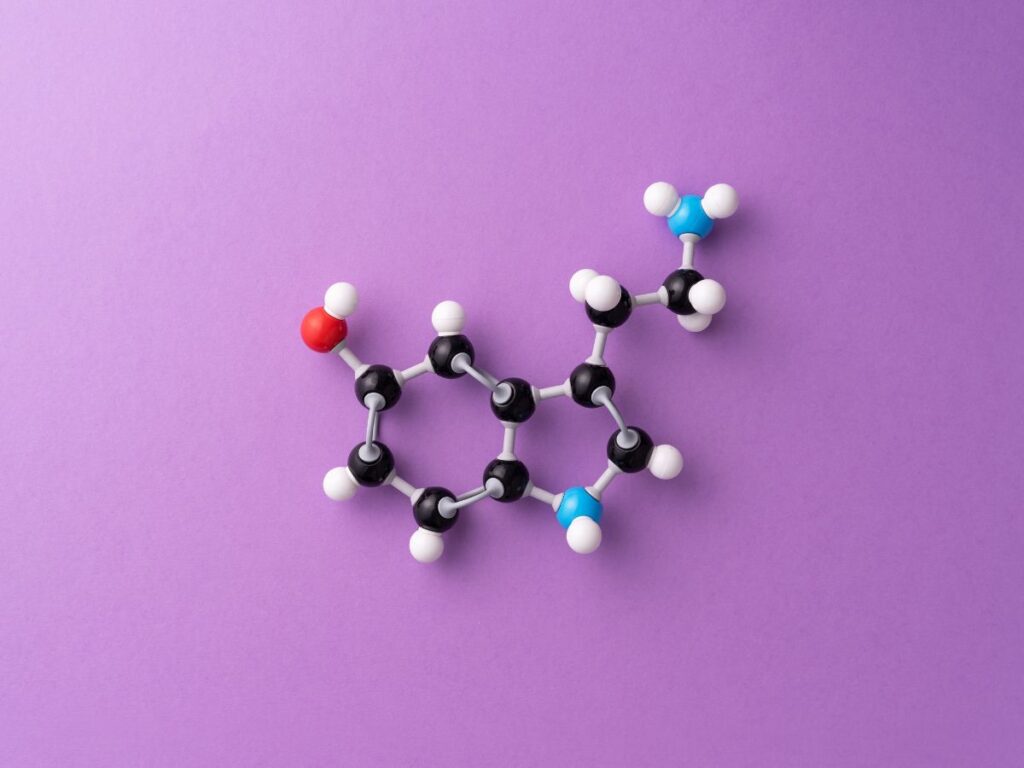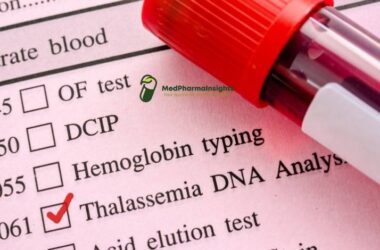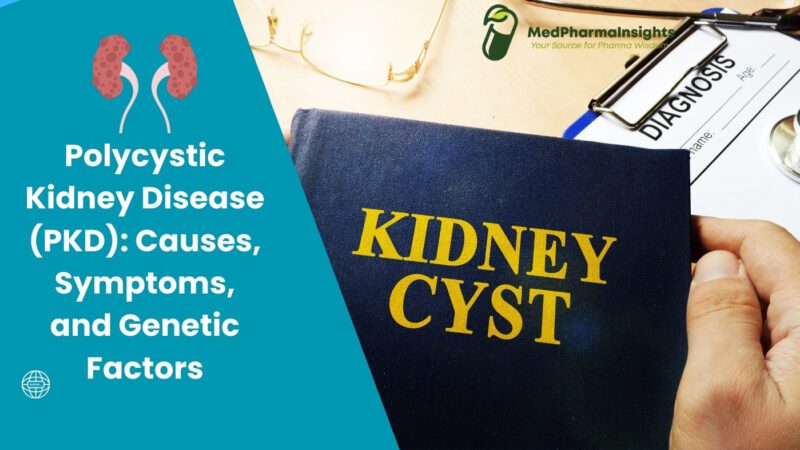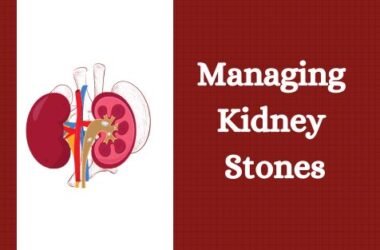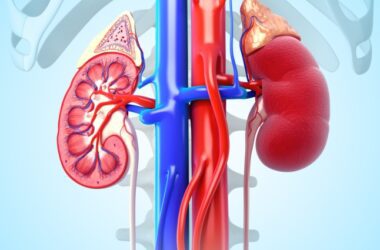Polycystic Kidney Disease (PKD) is a genetic disorder that affects the kidneys, causing the growth of fluid-filled sacs called cysts within these vital organs. It is one of the most common inherited kidney disorders, impacting millions of people worldwide. In this blog, we will delve into the causes, symptoms, and genetic factors associated with PKD to gain a comprehensive understanding of this condition.
pathophysiology
The pathophysiology of Polycystic Kidney Disease (PKD) is a complex process that involves genetic mutations, abnormal cell proliferation, and the formation of fluid-filled cysts in the kidneys. PKD is primarily caused by mutations in specific genes, leading to disruptions in normal kidney development and function. In this explanation, we will delve into the step-by-step pathophysiological processes involved in PKD.
- Genetic Mutation: PKD is primarily a genetic disorder, and it can be inherited in an autosomal dominant or autosomal recessive manner, depending on the specific gene involved. The most common form of PKD, known as Autosomal Dominant Polycystic Kidney Disease (ADPKD), is caused by mutations in the PKD1 or PKD2 genes, which code for proteins involved in maintaining the structure and function of renal tubules.
- Abnormal Tubular Development: In the early stages of embryonic kidney development, renal tubules are supposed to grow and branch in an organized manner. However, in individuals with PKD, genetic mutations disrupt this normal development. As a result, renal tubules become dilated and misshapen.
- Cell Proliferation: The mutated genes in PKD lead to the activation of signaling pathways that promote abnormal cell proliferation within the renal tubules. This excessive cell division results in the formation of numerous fluid-filled sacs or cysts within the kidneys.
- Cyst Formation: As cysts form, they continue to grow and expand, gradually replacing the healthy kidney tissue. These cysts are filled with a watery fluid and can vary in size. Over time, the increasing number and size of cysts impair kidney function.
- Compression of Surrounding Tissue: As the cysts enlarge, they can compress and distort the surrounding kidney structures, including blood vessels and the renal pelvis. This compression can lead to further complications such as reduced blood flow to the kidneys.
- Hypertension (High Blood Pressure): PKD can also lead to hypertension (high blood pressure) due to the altered function of the renal tubules and the renin-angiotensin-aldosterone system. High blood pressure is a common early symptom of PKD and can exacerbate kidney damage.
- Reduced Kidney Function: As the cysts progressively replace functional kidney tissue, the kidneys’ ability to filter waste products from the blood and regulate fluid and electrolyte balance becomes compromised. This reduction in kidney function can lead to symptoms such as fatigue, fluid retention, and electrolyte imbalances.
- Complications: In advanced stages of PKD, the continued expansion of cysts can lead to various complications, including kidney stones, urinary tract infections (UTIs), and an increased risk of developing other renal disorders.
- Liver Involvement (in ARPKD): In Autosomal Recessive Polycystic Kidney Disease (ARPKD), mutations in the PKHD1 gene lead to not only kidney cysts but also cysts in the liver and other organs. This can result in severe symptoms in infancy and childhood.
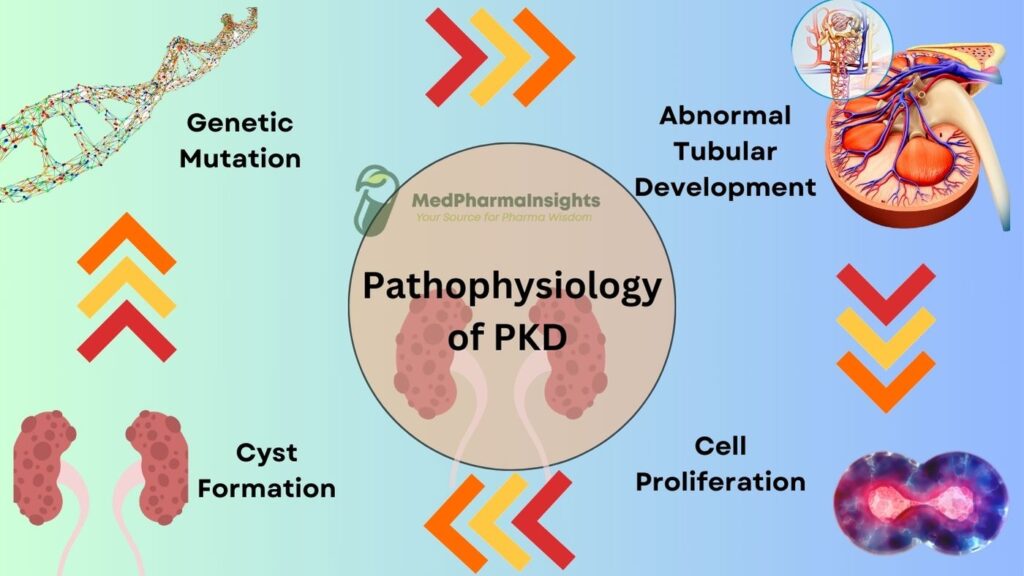

Causes of Polycystic Kidney Disease
PKD primarily has two forms, autosomal dominant polycystic kidney disease (ADPKD) and autosomal recessive polycystic kidney disease (ARPKD). Both types are caused by genetic mutations but have different inheritance patterns.
Autosomal Dominant Polycystic Kidney Disease (ADPKD)
ADPKD is the most common form of PKD, accounting for approximately 90% of all cases. It is caused by mutations in either the PKD1 or PKD2 genes. These genes provide instructions for the production of proteins that are essential for maintaining the structure and function of renal tubules, which are the tiny tubes within the kidneys responsible for filtering waste products from the blood.
When these genes are mutated, it leads to abnormal cell proliferation and cyst formation in the kidneys. The cysts gradually enlarge and replace healthy kidney tissue, impairing kidney function over time.
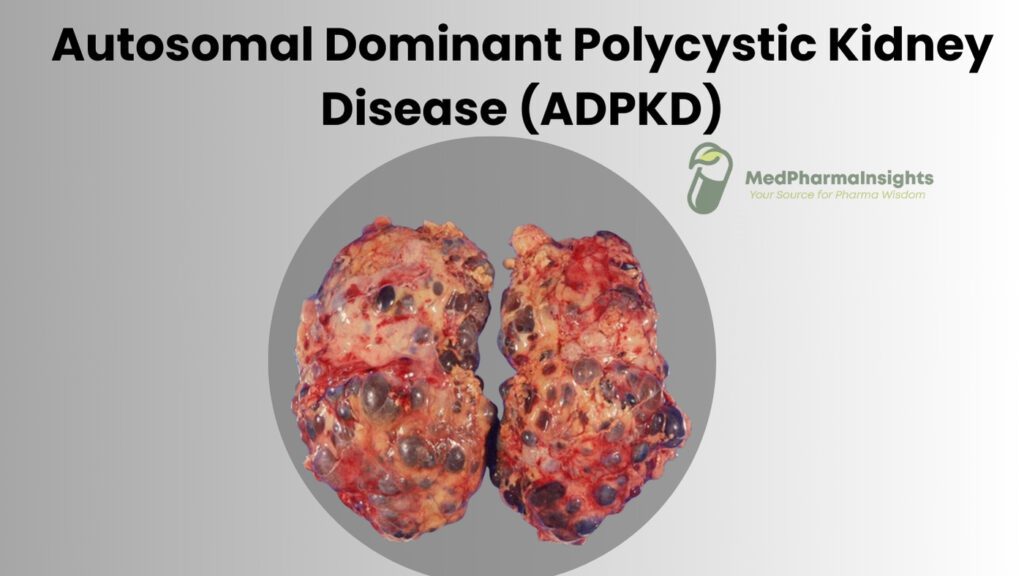

Autosomal Recessive Polycystic Kidney Disease (ARPKD)
ARPKD is a less common but more severe form of PKD. It is caused by mutations in the PKHD1 gene, which encodes a protein called fibrocystin. Fibrocystin is involved in the development and maintenance of the bile ducts in the liver and the renal tubules in the kidneys.
Mutations in the PKHD1 gene result in the formation of cysts not only in the kidneys but also in the liver and other organs. This leads to more severe symptoms in infancy and childhood.
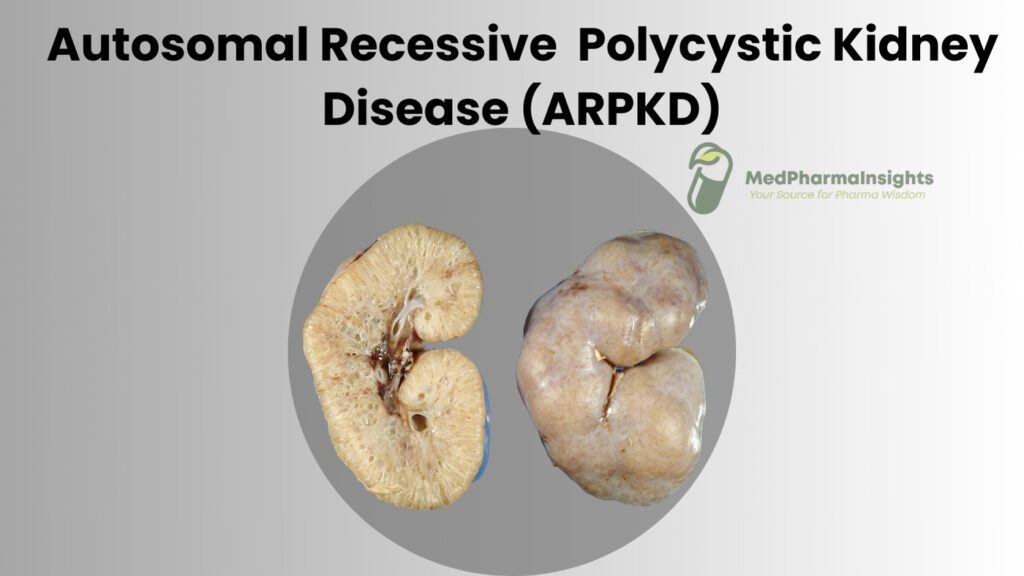

Symptoms of Polycystic Kidney Disease
The symptoms of PKD can vary depending on the type of the disease and the age at which it manifests. Here are some common symptoms associated with PKD:
- Hypertension (High Blood Pressure): High blood pressure is a common early symptom of PKD. It can result from the reduced ability of the kidneys to regulate blood pressure due to cyst growth.
- Pain: Pain in the back, side, or abdomen can occur when cysts in the kidneys become enlarged or infected.
- Hematuria: Blood in the urine, known as hematuria, can occur due to the rupture of cysts or damage to blood vessels in the kidneys.
- Frequent Urination: Enlarged kidneys can press on the bladder, leading to increased frequency of urination.
- Kidney Stones: Cysts can obstruct the normal flow of urine, increasing the risk of kidney stone formation.
- Fatigue: As kidney function declines, it can lead to anemia and a feeling of constant fatigue.
- Urinary Tract Infections (UTIs): PKD can make individuals more susceptible to UTIs due to the presence of cysts in the urinary tract.
Genetic Factors in PKD
PKD is a hereditary disorder, meaning it is passed down from parents to their children through genetic mutations. The specific genetic factors involved in PKD include:
- Autosomal Dominant Inheritance: In ADPKD, a person only needs one copy of the mutated gene from either parent to develop the disease. Each child of an affected individual has a 50% chance of inheriting the mutated gene.
- Autosomal Recessive Inheritance: In ARPKD, both parents must carry a copy of the mutated gene for their child to develop the disease. If both parents are carriers, each child has a 25% chance of inheriting two mutated copies of the gene and developing ARPKD.
Conclusion
Polycystic Kidney Disease is a complex genetic disorder that affects kidney function. Understanding its causes, symptoms, and genetic factors is crucial for early diagnosis and management. Genetic counseling and testing can help individuals with a family history of PKD make informed decisions about their health and family planning. While there is no cure for PKD, treatments are available to manage its symptoms and slow the progression of the disease, emphasizing the importance of early detection and intervention.


